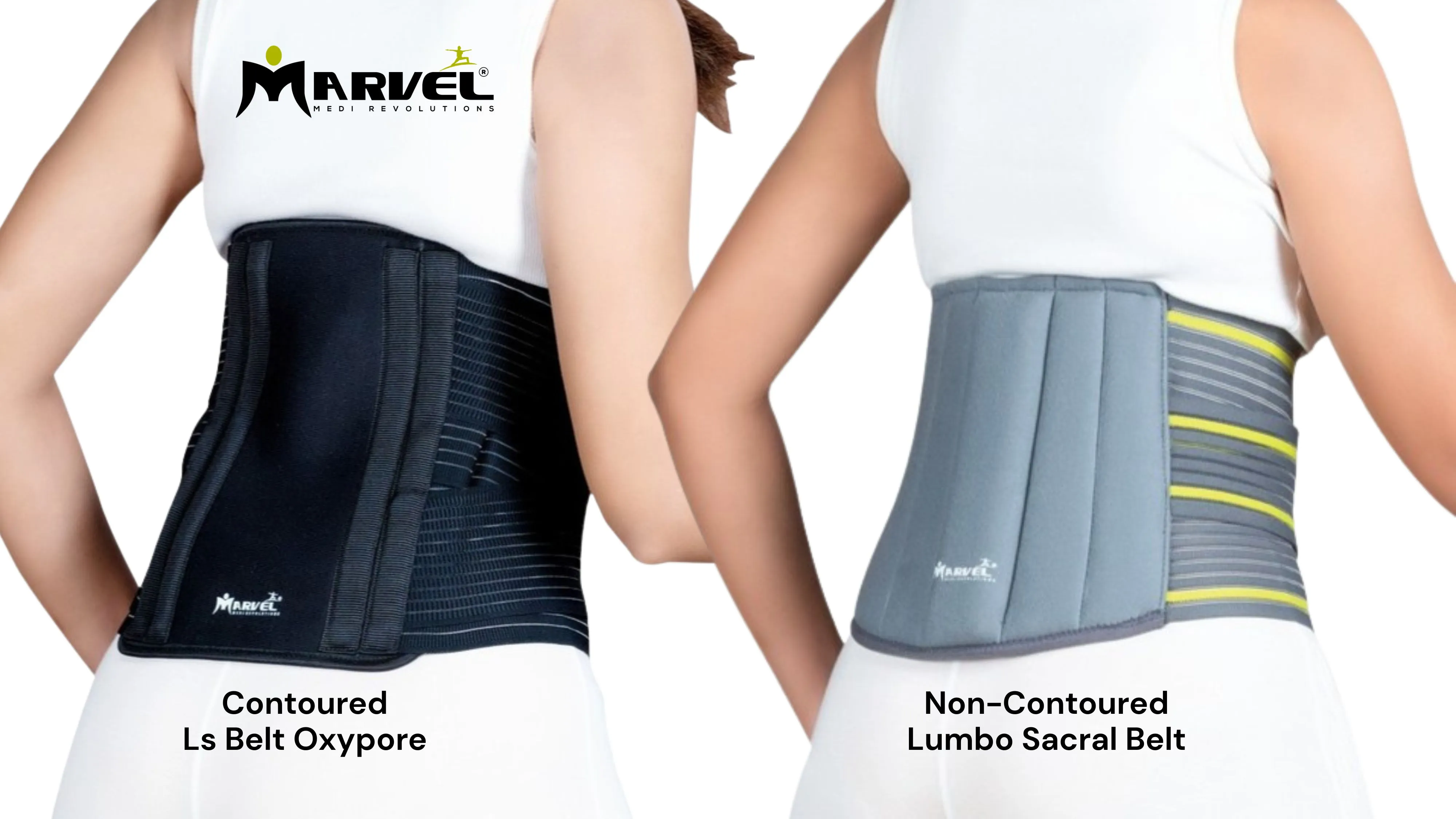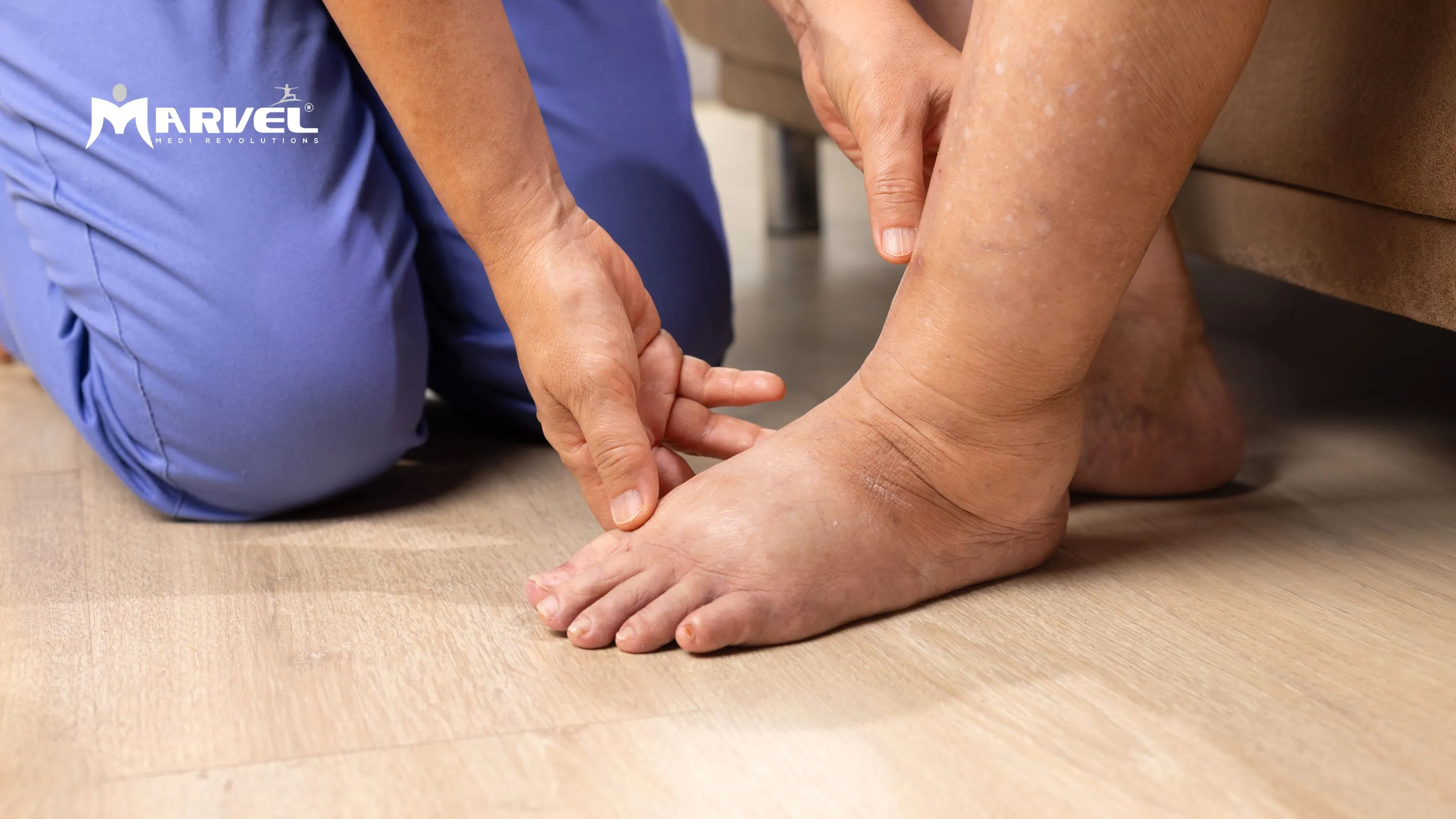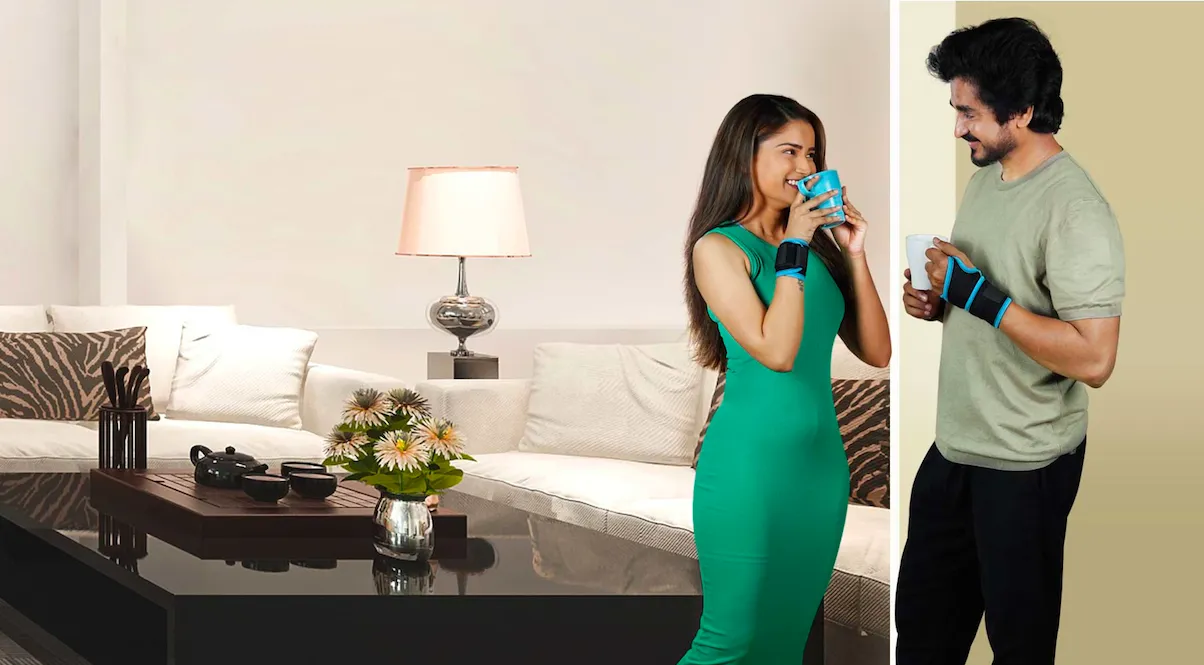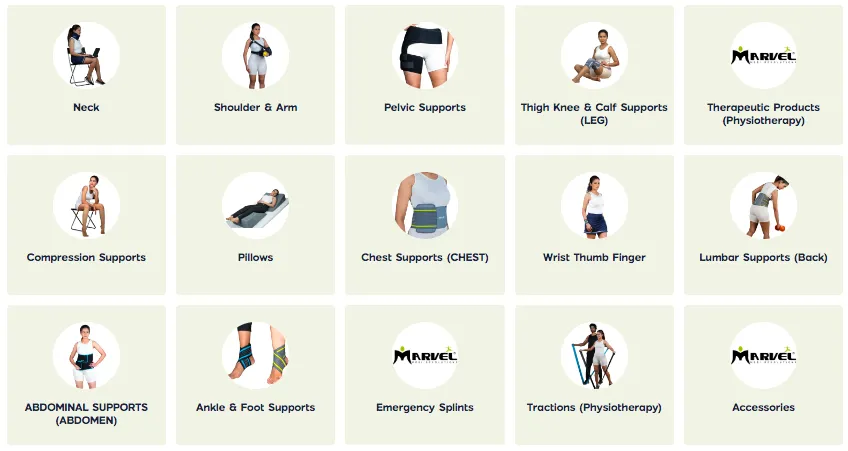Contoured vs. Non-Contoured Lumbar Belts: Which One Should You Choose?
Back pain affects people across professions and ages, from those working long hours at a desk to those engaged in physical labor. Lumbar belts are a common and effective way to manage pain, improve posture, and support recovery from spinal or muscular conditions.
When you start exploring options, you’ll often find two main types of belts:
-
Contoured Lumbar Belts
-
Non-Contoured Lumbar Belts
Both are designed to support your lower back, but they differ significantly in design, comfort, and purpose. Understanding these differences can help you make the right choice for your specific condition and lifestyle.
Understanding Contoured Lumbar Belts
A contoured lumbar belt is ergonomically designed to follow the natural curve (lordosis) of your lower back. Its shape helps maintain spinal alignment and provides targeted support where your back needs it most.
Key Features:
-
Anatomically curved design with a wider support panel at the back
-
Tapered edges for a better grip and smooth fit around the waist
-
Soft or firm cushioned support at the lumbar region
-
Body-hugging structure that minimizes belt rolling or displacement
This belt is ideal for people who need long-term, customized support throughout daily activities — whether at work, during driving, or while sitting for extended hours.
Best Suited For:
-
Chronic lower back pain
-
Lumbar spondylosis or disc herniation
-
Sciatica or posture-related conditions
-
Post-surgical rehabilitation where gentle support is needed
-
Individuals seeking enhanced comfort and flexibility
Understanding Non-Contoured Lumbar Belts
Unlike the contoured type, a non-contoured lumbar belt has a flat, uniform design that wraps evenly around the lower back and abdomen. It provides firm and broad support to both the lumbar and sacral regions, making it ideal when higher immobilization is required.
Key Features:
-
Straight and flat structure for consistent compression
-
Broad back panel offering stability to the lower spine and sacral area
-
Strong elastic or reinforced material for firm hold
-
Suitable for wear over clothes and adaptable to most body types
While it lacks the anatomical shaping of contoured belts, its structure allows for stronger immobilization, which is especially beneficial in post-operative care or chronic back conditions that demand restricted movement.
Best Suited For:
-
Post-surgical recovery or rehabilitation
-
Severe or persistent lower back pain
-
Situations requiring reduced spinal mobility
-
Support during lifting or static activities
Key Differences at a Glance
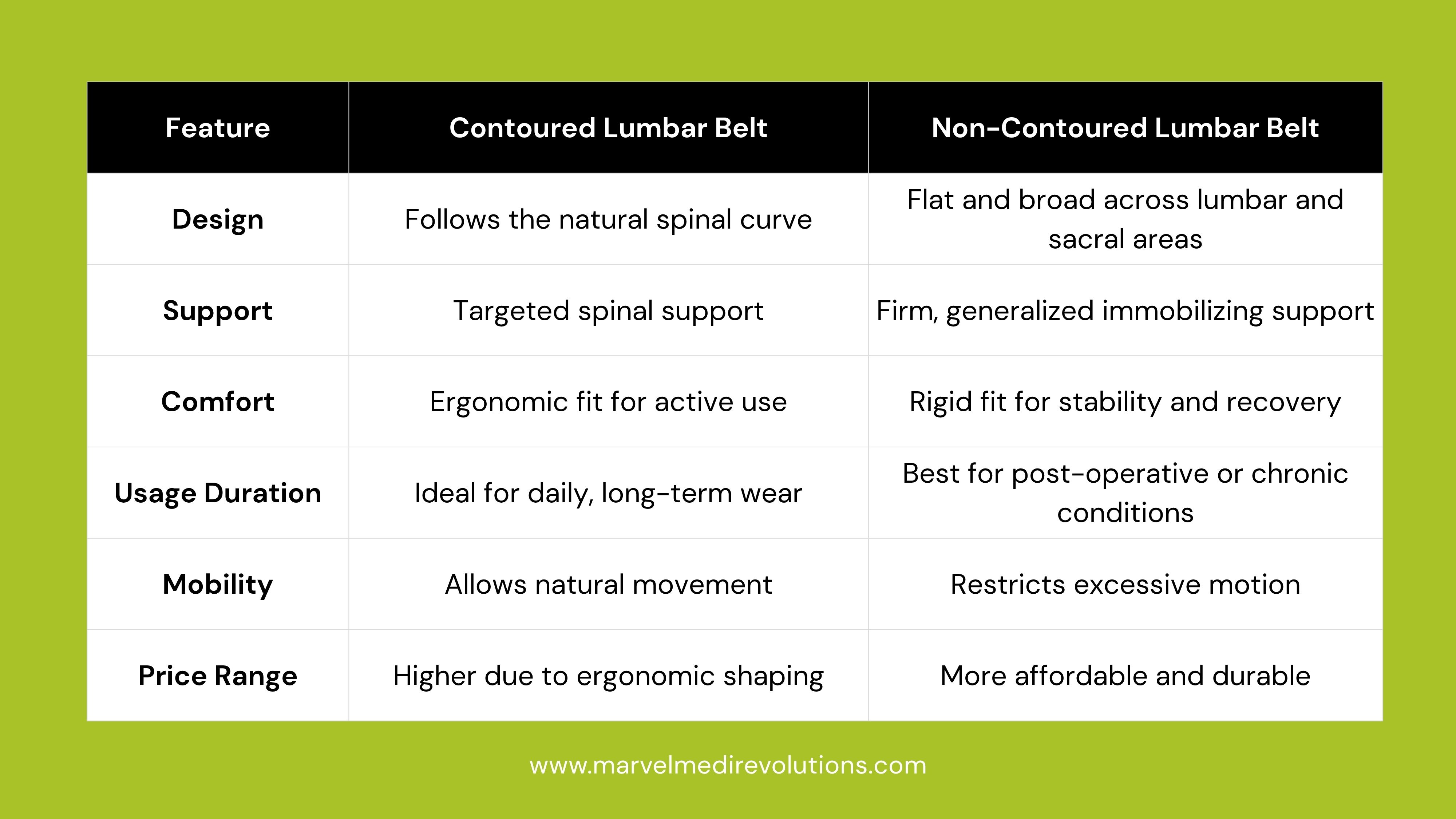
Choosing the Right Belt for You
Selecting the right lumbar belt depends on your medical condition, activity level, and comfort preferences.
Ask yourself:
-
Do I have a diagnosed spinal condition or require post-surgical support?
→ Choose a non-contoured belt for firmer immobilization. -
Do I need all-day support for posture correction or mild chronic pain?
→ A contoured belt offers ergonomic comfort. -
Do I experience frequent movement or long sitting hours?
→ Opt for the contoured design that moves with your body. -
Do I need a belt for temporary or occasional use?
→ The non-contoured belt provides reliable stability for shorter durations.
Expert Tip: Always Consult Before You Wear
While lumbar belts can significantly relieve pain, wearing the wrong type or for too long can do more harm than good. Incorrect use may lead to:
-
Ineffective support or discomfort
-
Poor posture alignment
-
Weakening of core muscles from over-dependence
It’s always advisable to consult your orthopedic doctor or physiotherapist to choose the appropriate belt type, fit, and duration of use based on your condition.
Choosing Quality for Reliable Relief
We offer both contoured and non-contoured lumbar belts that meet orthopedic standards and provide lasting comfort. Each belt is made from breathable materials, strong Velcro fasteners, and durable elastic support, ensuring comfort without compromising stability.
Check our our products here:
Contoured LS Belt Oxypore: https://marvelmedirevolutions.com/product/66
Non-Controured Lumbo Sacral Belt: https://marvelmedirevolutions.com/product/67
Whether you’re recovering from surgery, managing chronic pain, or seeking preventive support for posture, the right lumbar belt can restore comfort and confidence in your daily movement.
Final Thoughts
Both types of lumbar belts serve a distinct purpose.
-
Contoured belts are perfect for daily, ergonomic support and active mobility.
-
Non-contoured belts provide broad, firm stability for higher immobilization in chronic or post-operative conditions.
Always choose wisely and under medical guidance to get the support your back truly needs.

